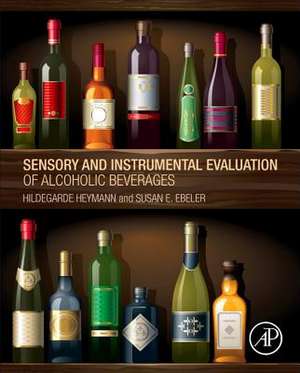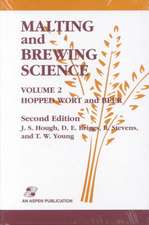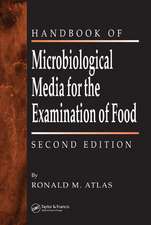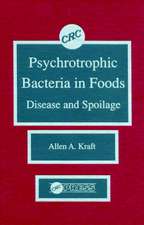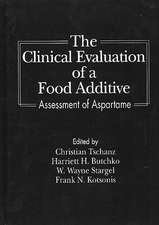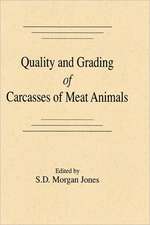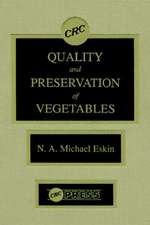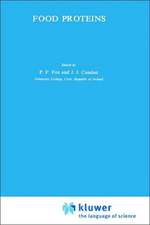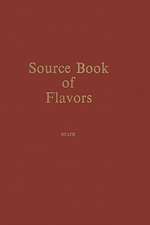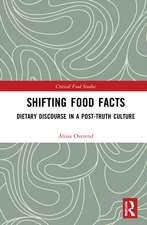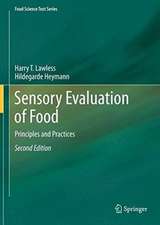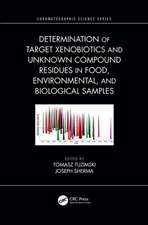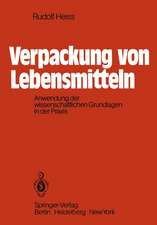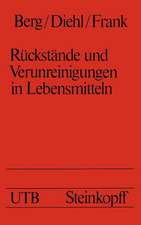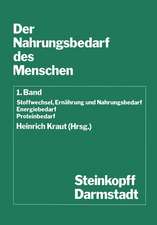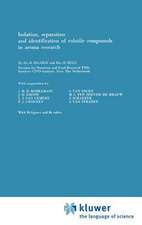Sensory and Instrumental Evaluation of Alcoholic Beverages
Autor Hildegarde Heymann, Susan E. Ebeleren Limba Engleză Hardback – 10 noi 2016
Analytical methods for identifying and assessing the flavor compounds present in the beverages are included that address both volatile and non-volatile techniques, along with rapid methods of assessment. Case studies highlight the testing of different types of alcoholic beverages running the entire gamut of methods and the appropriate subset of methods. Also included is information of data analyses with the appropriate R-codes to allow practitioners to use the book as a handbook to analyze their own data.
- Uniquely focused on alcoholic beverages and their assessment
- Includes real-world information for practical application
- Presents a full range of methodologies, providing key comparative insights
Preț: 548.91 lei
Preț vechi: 716.09 lei
-23% Nou
Puncte Express: 823
Preț estimativ în valută:
105.03€ • 109.66$ • 86.93£
105.03€ • 109.66$ • 86.93£
Carte tipărită la comandă
Livrare economică 28 martie-11 aprilie
Preluare comenzi: 021 569.72.76
Specificații
ISBN-13: 9780128027271
ISBN-10: 0128027274
Pagini: 280
Dimensiuni: 191 x 235 x 22 mm
Greutate: 0.69 kg
Editura: ELSEVIER SCIENCE
ISBN-10: 0128027274
Pagini: 280
Dimensiuni: 191 x 235 x 22 mm
Greutate: 0.69 kg
Editura: ELSEVIER SCIENCE
Cuprins
Part I: Sensory evaluation: principles and application to wines1. Sensory perception2. Purposes of sensory and analytical testing in the alcoholic beverage industry3. Overview of applicable sensory evaluation techniques
Part II: Analytical techniques used to analyse flavour compounds associated with alcoholic beverages4. Rapid methods to analyse alcoholic beverages5. Volatile analyses of alcoholic beverages6. Non-volatile analyses of alcoholic beverages
Part III: Case studies in the sensory testing of wines and alcoholic beverages including data analyses and R-codesThese would be picked to cover the entire gamut of methods mentioned in part I and the appropriate subset of methods discussed in Part II.7. White wine8. Red wine9. Sparkling wine10. Beer11. Spirits
Part II: Analytical techniques used to analyse flavour compounds associated with alcoholic beverages4. Rapid methods to analyse alcoholic beverages5. Volatile analyses of alcoholic beverages6. Non-volatile analyses of alcoholic beverages
Part III: Case studies in the sensory testing of wines and alcoholic beverages including data analyses and R-codesThese would be picked to cover the entire gamut of methods mentioned in part I and the appropriate subset of methods discussed in Part II.7. White wine8. Red wine9. Sparkling wine10. Beer11. Spirits
